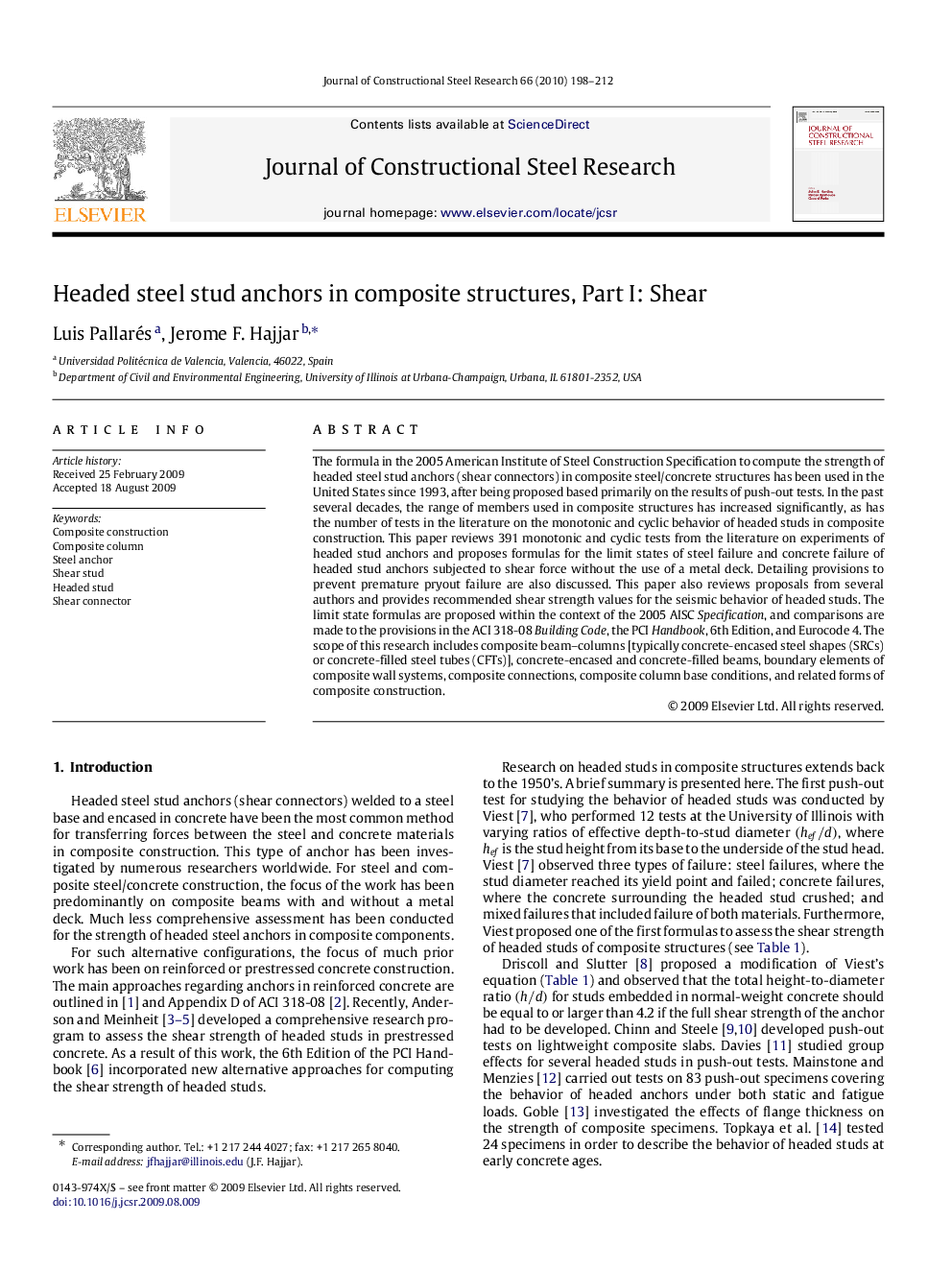| کد مقاله | کد نشریه | سال انتشار | مقاله انگلیسی | نسخه تمام متن |
|---|---|---|---|---|
| 285980 | 509227 | 2010 | 15 صفحه PDF | دانلود رایگان |

The formula in the 2005 American Institute of Steel Construction Specification to compute the strength of headed steel stud anchors (shear connectors) in composite steel/concrete structures has been used in the United States since 1993, after being proposed based primarily on the results of push-out tests. In the past several decades, the range of members used in composite structures has increased significantly, as has the number of tests in the literature on the monotonic and cyclic behavior of headed studs in composite construction. This paper reviews 391 monotonic and cyclic tests from the literature on experiments of headed stud anchors and proposes formulas for the limit states of steel failure and concrete failure of headed stud anchors subjected to shear force without the use of a metal deck. Detailing provisions to prevent premature pryout failure are also discussed. This paper also reviews proposals from several authors and provides recommended shear strength values for the seismic behavior of headed studs. The limit state formulas are proposed within the context of the 2005 AISC Specification, and comparisons are made to the provisions in the ACI 318-08 Building Code, the PCI Handbook, 6th Edition, and Eurocode 4. The scope of this research includes composite beam–columns [typically concrete-encased steel shapes (SRCs) or concrete-filled steel tubes (CFTs)], concrete-encased and concrete-filled beams, boundary elements of composite wall systems, composite connections, composite column base conditions, and related forms of composite construction.
Journal: Journal of Constructional Steel Research - Volume 66, Issue 2, February 2010, Pages 198–212